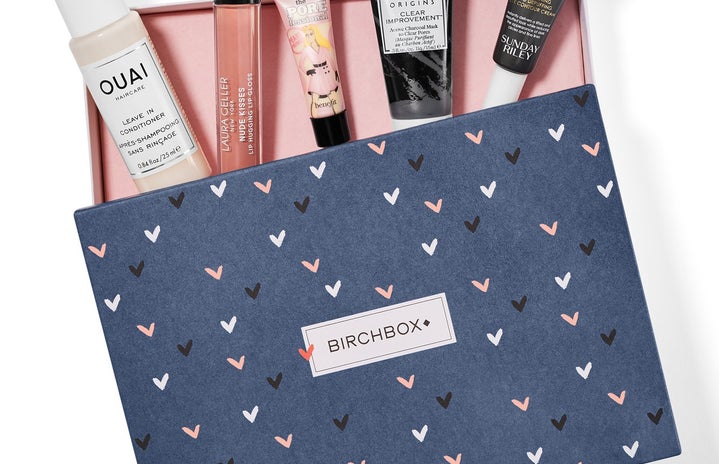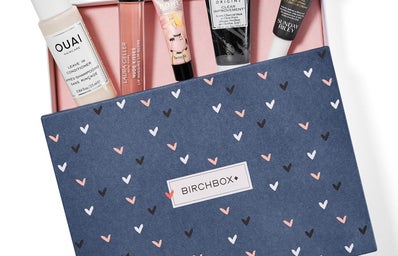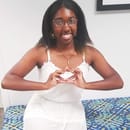If you ask Kima Cooper to choose between skincare and makeup, she’s Team Skincare all the way. She prefers her skin to be looking and feeling great instead of caking stuff on it, and says she spends way more money on skincare than makeup at any given time.
Cooper works at Birchbox, one of the leading beauty box sampling subscriptions, so she always has something new at her fingertips to try out. As the Director of Social and Content, and head of the Diversity and Inclusivity Committee, she and her team are in charge of all Birchbox’s social media accounts, namely Instagram. Despite her role, Cooper can relate to feeling constrained by shade choices available to her in the makeup aisle.
“I used to use YSL Touche Eclat under my eyes in college and now every time I look at photos from back then, I can see the really chalky white cast under my eyes in the pictures. Today, I find that the shades work better for my skin tones, but to your point, there is room for us to grow and build out the sampling sizes so more people can test things out and we definitely recognize that.”
Due to what’s been dubbed The Fenty Effect, many makeup brands have made an active effort to create wider shade ranges for woman of all colors, light and dark, instead of 10-20 shades of beige.
However, it has been nearly two years, and I have found through my experience that the samples that stores give out to help shoppers figure out which products they’d like to buy are not matching up to the expanded shade ranges that they might now offer.
The deal with beauty samples
According to Racked, gifts with purchase and loyalty programs, AKA “free premiums,” were popular in many industries besides the personal care industry until about 20 years ago. However, the beauty industry kept giving out the products as a way to “attract new customer and create social media buzz.” This led way to the subscription box craze that Birchbox has become a leader of, where casual beauty consumers can try out travel-sized products and decide if they’d like to purchase the full sized version.
It’s supposed to be cost-effective and a fun, friendly way to play with new beauty. Unfortunately, many POC, including myself, have declined subscribing to beauty boxes due to the fact that the products within them may not be an accurate color match in makeup, or an accurate match for hair type in hair products. And I personally stopped aiming to get gifts with purchase during my shopping trips, because most of the time I can’t use what cosmetic retailers give me. The products are too light or make my skin look ashy.
Behind the samples is cost
So what gives? Why are companies not producing or including sample beauty products for POC with darker skin? It all boils down to the one thing that it usually boils down to: money. I spoke to Cheryl Wischhover, a contributing writer at The Goods by Vox, who let me in on a little secret. “What I can tell you about samples is that they cost almost as much as full sized products. They are super expensive for companies to produce, and retailers don’t buy them – companies have to provide them for free to retailers. It’s part of the marketing budget, basically.”
This sentiment was also confirmed by Ellie Deresiewicz, a Birchbox Merchant. “Sometimes we can influence the available shades [provided in Birchboxes], but most often we’re quite limited. While brands might be entering the market with dozens of shades when it comes to full-size face color products (i.e. foundation, concealer, or powder), they usually don’t produce as many shades of their samples. In some instances, we’ve been able to make the business case to our brand partners about why it’s necessary to create samples sizes across a wider shade range. This often requires a larger financial investment on Birchbox’s end, as we may be required to order into the brand’s full MOQ (minimum order quantity) in order to actually do a production run of a sample shade.”
This makes sense at first glance. Making more sample shades costs more money, so companies don’t necessarily want to do it. However, in 2017 alone, black consumers spent 1.3 billion dollars in personal care items. That amount of spending power could more than make up for the marketing budget that companies feel that they are losing.
Prioritizing diversity and inclusivity
So what can companies do to expand upon their sample product inclusivity in stores and online? Deresiewicz concludes that “addressing product diversity starts with prioritizing brands that are inherently focused on inclusivity” as well as “sourcing new brands and products that are created for specific customers.”
Kima also talks about the importance of social media in conjunction with pushing brands to create more inclusive sample sizes for deeper skin tones. “Naturally we are inclined to ‘do what you know’ and that many people are not aware of the unconscious bias that they hold. Even I have to address the team and remind them and myself that it’s not only Caucasian and not only black or brown people. I wanna see some South Asian women in here, I want to see some Indian women in here.”
Now that’s an idea I think we can all get behind.


